TETRAETHYLAMMONIUM CHLORIDE MONOHYDRATE
Synonym(s):TEA chloride
- CAS NO.:68696-18-4
- Empirical Formula: C8H22ClNO
- Molecular Weight: 183.72
- MDL number: MFCD00149992
- EINECS: 677-014-4
- SAFETY DATA SHEET (SDS)
- Update Date: 2024-10-29 18:21:28

What is TETRAETHYLAMMONIUM CHLORIDE MONOHYDRATE?
The Uses of TETRAETHYLAMMONIUM CHLORIDE MONOHYDRATE
Phase transfer catalystTetraethylammonium chloride monohydrate is used in the preparation of 2,3,4,6-tetra-O-acetyl-beta-D-glucopyranosyl chloride by reacting with 1,2-O-acetoxonium-3,4,6-tri-O-acetyl-alfaD-glucopyranose perchlorate.
Purification Methods
Crystallise the chloride from EtOH by adding diethyl ether, from warm water by adding EtOH and diethyl ether, from dimethylacetamide or from CH2Cl2 by addition of diethyl ether. Dry it over P2O5 in vacuum for several days. It also crystallises from acetone/CH2Cl2/hexane (2:2:1) [Blau & Espenson J Am Chem Soc 108 1962 1986, White & Murray J Am Chem Soc 109 2576 1987]. [Beilstein 4 IV 332.]
Properties of TETRAETHYLAMMONIUM CHLORIDE MONOHYDRATE
| Melting point: | ca 110℃ |
| Density | 1.0801 |
| storage temp. | Store below +30°C. |
| solubility | 1410g/l |
| form | Crystalline |
| PH | 6.5 (100g/l, H2O, 20℃) |
| Water Solubility | Soluble in water. |
| Sensitive | Hygroscopic |
| Merck | 14,9200 |
| BRN | 3563247 |
| CAS DataBase Reference | 68696-18-4(CAS DataBase Reference) |
Safety information for TETRAETHYLAMMONIUM CHLORIDE MONOHYDRATE
| Signal word | Warning |
| Pictogram(s) |
 Exclamation Mark Irritant GHS07 |
| GHS Hazard Statements |
H302:Acute toxicity,oral H315:Skin corrosion/irritation H319:Serious eye damage/eye irritation H335:Specific target organ toxicity, single exposure;Respiratory tract irritation |
| Precautionary Statement Codes |
P261:Avoid breathing dust/fume/gas/mist/vapours/spray. P264:Wash hands thoroughly after handling. P264:Wash skin thouroughly after handling. P270:Do not eat, drink or smoke when using this product. P301+P312:IF SWALLOWED: call a POISON CENTER or doctor/physician IF you feel unwell. P302+P352:IF ON SKIN: wash with plenty of soap and water. P305+P351+P338:IF IN EYES: Rinse cautiously with water for several minutes. Remove contact lenses, if present and easy to do. Continuerinsing. |
Computed Descriptors for TETRAETHYLAMMONIUM CHLORIDE MONOHYDRATE
New Products
Tert-butyl bis(2-chloroethyl)carbamate (S)-3-Aminobutanenitrile hydrochloride N-Boc-D-alaninol N-BOC-D/L-ALANINOL N-octanoyl benzotriazole 3,4-Dibenzyloxybenzaldehyde 4-Hydrazinobenzoic acid 1,1’-CARBONYLDIIMIDAZOLE R-2-BENZYLOXY PROPIONIC ACID 4-HYDROXY BENZYL ALCOHOL 1,1’-CARBONYLDI (1,2-4 TRIAZOLE) 3-NITRO-2-METHYL ANILINE (2-Hydroxyphenyl)acetonitrile 4-Bromopyrazole 5-BROMO-2CYANO PYRIDINE 5,6-Dimethoxyindanone 5-broMo-2-chloro-N-cyclopentylpyriMidin-4-aMine 2-(Cyanocyclohexyl)acetic acid 4-methoxy-3,5-dinitropyridine 2-aminopropyl benzoate hydrochloride 1-(4-(aminomethyl)benzyl)urea hydrochloride tert-butyl 4- (ureidomethyl)benzylcarbamate diethyl 2-(2-((tertbutoxycarbonyl)amino) ethyl)malonate Ethyl-2-chloro((4-methoxyphenyl)hydrazono)acetateRelated products of tetrahydrofuran
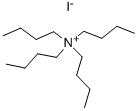


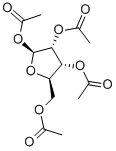
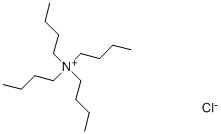
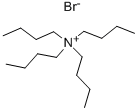
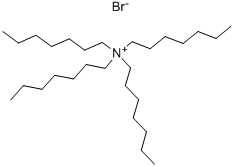

You may like
-
 Tetraethylammonium chloride monohydrate CAS 68696-18-4View Details
Tetraethylammonium chloride monohydrate CAS 68696-18-4View Details
68696-18-4 -
 55441-95-7 99%View Details
55441-95-7 99%View Details
55441-95-7 -
 N-Vinylformamide 99%View Details
N-Vinylformamide 99%View Details
13162-05-5 -
 Chloro Uracil 1820-81-1 99%View Details
Chloro Uracil 1820-81-1 99%View Details
1820-81-1 -
 207557-35-5 99%View Details
207557-35-5 99%View Details
207557-35-5 -
 2-ethyl-6-methyl-3-hydroxypyridine succinate 99%View Details
2-ethyl-6-methyl-3-hydroxypyridine succinate 99%View Details
127464-43-1 -
 2-ETHYLPYRIDINE 100-71-0 99%View Details
2-ETHYLPYRIDINE 100-71-0 99%View Details
100-71-0 -
 181228-33-1 (S)-Methyl 3-amino-2-((tert-butoxycarbonyl)amino)propanote Hydrochloride (DAP-OMe. HCl) 99%View Details
181228-33-1 (S)-Methyl 3-amino-2-((tert-butoxycarbonyl)amino)propanote Hydrochloride (DAP-OMe. HCl) 99%View Details
181228-33-1
Statement: All products displayed on this website are only used for non medical purposes such as industrial applications or scientific research, and cannot be used for clinical diagnosis or treatment of humans or animals. They are not medicinal or edible.